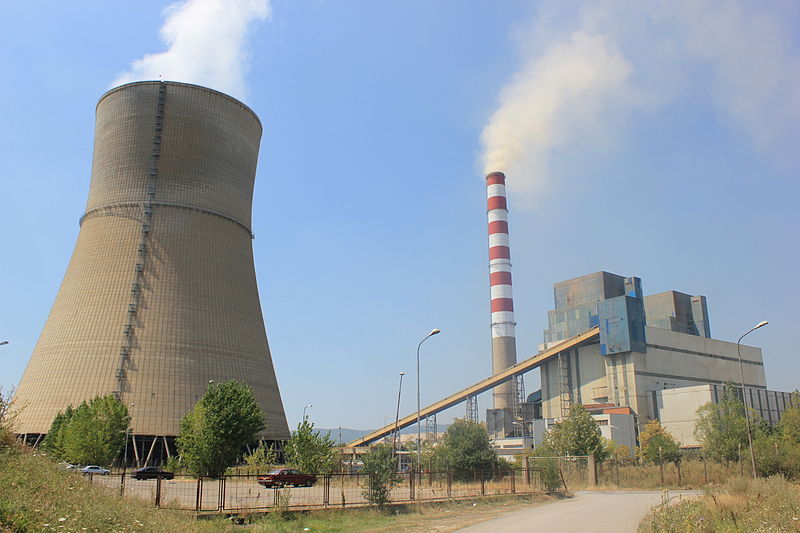According to a new report authored by the European Bank for Reconstruction and Development (EBRD), Western Balkan countries are home to a largely underdeveloped renewable energy market.
However, with the region still heavily dependent on lignite coal generation capacity, much of which is reaching its end of life, there is huge potential for growth. As such, there is a need and opportunity to quickly develop cost-competitive renewable energy generators.
Bosnia Herzegovina, FYR Macedonia, Kosovo, Montenegro and Serbia still rely on large penetrations of lignite coal generation capacity, comvering between 65% and 75% of their net generation with the dirty fuel. The EU average, in comparison, is said to be around 10%. This means that when adjusted for the size of the economy, says EBRD, the countries have three times the carbon output of that of the rest of Europe.
Not only are coal generators very popular among the Western Balkans, but they are also fairly old and inefficient, according to the report's authors. Indeed, they find that of the top 10 most polluting coal power stations, seven are located in the Western Balkans.
What's more, new coal capacity totaling around 18 GW is said to currently be under various stages of development. In Bosnia Herzegovina alone, there is a cumulative pipeline of 1.7 GW, write the authors. This includes the Tuza unit 7 with a system rating of 450 MW, Banovici with 300 MW, Ugljevik III rated at 600 MW and Kakanj 8 with 300 MW.
Meanwhile in Kosovo, which runs almost entirely on lignite coal, the government has signed a contract with ContourGlobal for the construction of a new 500 MW coal generator near its capital city Pristina, with operations expected to commence by 2023.
Rising prices
Against a backdrop of potentially rising carbon prices within the European Emissions Trading Scheme, the EBRD report finds the coal lignite plans to be economically ill-informed. “Even if the upgraded or new plants meet EU Best Available Technology (BAT) standards, the cost of emitting each tonne of carbon is expected to rise as the EU tightens its emissions-trading scheme, making the continued use of high emission power sources uneconomical,” it reads.
In this vein, the authors underline the potential for renewable energy development in the region. While conditions for hydropower generation are excellent and offer opportunities for further development, the authors also find that wind, solar and biomass are viable solutions for the region.
Underpinning this are recent renewables investments – the details of which were not shared – made by EBRD and German Development Bank KfW, in the region. Considerably more needs to be done, however.
In addition to the right climatic conditions for renewable energy generation, the region also provides vast, mostly untapped interconnector capacity. The good grid connection internally and across-borders offers ideal conditions to accommodate abundant renewable energy resources.
Last week, independent thinktank Carbon Tracker released an seperate report, stating that 42% of the world's coal-fired power plants run at a loss. By 2040, it said, that figure could rise to 72%. The authors highlighted high fuel costs, pointed to carbon pricing and air pollution regulations, which are driving up the prices of coal generation.
Moreover, 35% of the coal capacity currently online is said to be more expensive to run than the cost of new renewable generation capacity. That means PV is not only cheaper on a new-for-new basis, but it is also less expensive to build a new PV plant than continuing to fire existing coal-fired power stations.
The report’s authors say that as early as 2030, it will be cheaper to build renewable generation capacity than to continue to fire 96% of coal generation capacity.
This content is protected by copyright and may not be reused. If you want to cooperate with us and would like to reuse some of our content, please contact: editors@pv-magazine.com.




By submitting this form you agree to pv magazine using your data for the purposes of publishing your comment.
Your personal data will only be disclosed or otherwise transmitted to third parties for the purposes of spam filtering or if this is necessary for technical maintenance of the website. Any other transfer to third parties will not take place unless this is justified on the basis of applicable data protection regulations or if pv magazine is legally obliged to do so.
You may revoke this consent at any time with effect for the future, in which case your personal data will be deleted immediately. Otherwise, your data will be deleted if pv magazine has processed your request or the purpose of data storage is fulfilled.
Further information on data privacy can be found in our Data Protection Policy.